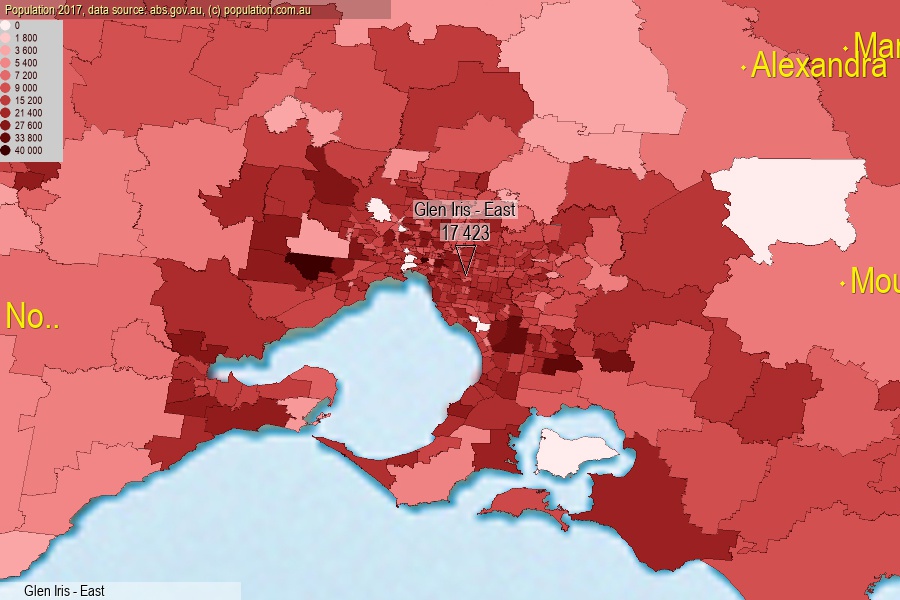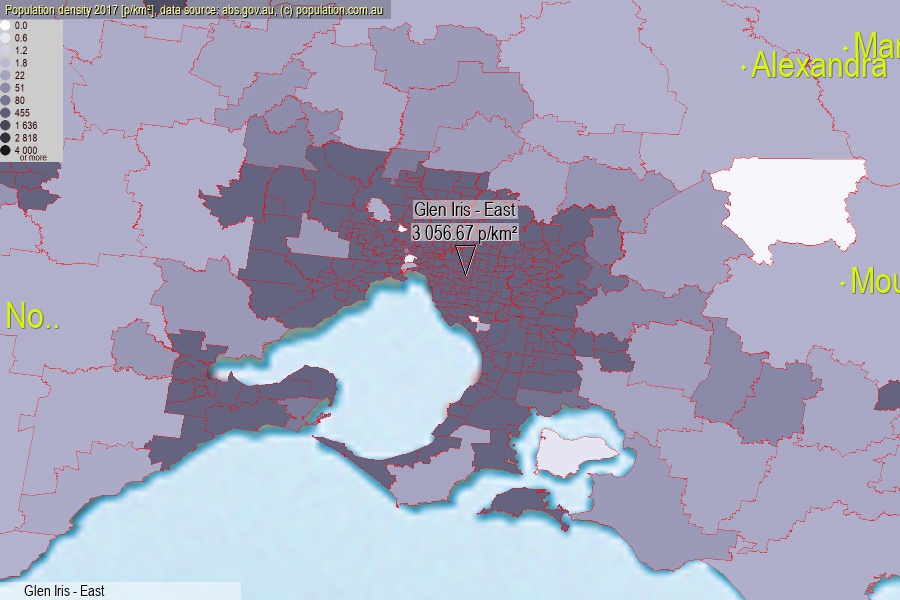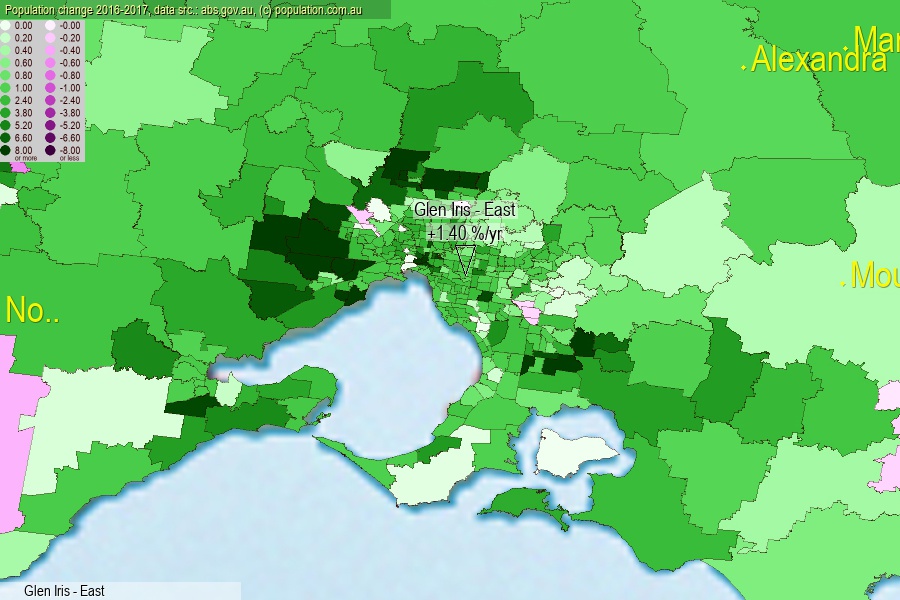 population.com.au
population.com.auLast official estimated population of Glen Iris - East (as Statistical Area Level 2) was 17 423 people (on 2017-06-30)[2]. This was 0.07% of total Australian population and 0.271% of VIC population. Area of Glen Iris - East is 5.70 km², in this year population density was 3 056.67 p/km² . If population growth rate would be same as in period 2016-2017 (+1.4%/yr), Glen Iris - East population in 2025 would be 19 477. [0]



Click to enlarge. Glen Iris - East is located in the center of the images.
Population [people], population density [p./km²] and population change [%/year] [2]
View borders » (new window) [4]
[1991-1992] +0.07 %/Yr.
[1992-1993] -0.45 %/Yr.
[1993-1994] -0.50 %/Yr.
[1994-1995] +0.56 %/Yr.
[1995-1996] +0.64 %/Yr.
[1996-1997] +0.09 %/Yr.
[1997-1998] -0.15 %/Yr.
[1998-1999] -0.25 %/Yr.
[1999-2000] +0.16 %/Yr.
[2000-2001] +0.96 %/Yr.
[2001-2002] +0.70 %/Yr.
[2002-2003] +0.41 %/Yr.
[2003-2004] +0.61 %/Yr.
[2004-2005] +0.98 %/Yr.
[2005-2006] +0.64 %/Yr.
[2006-2007] +1.54 %/Yr.
[2007-2008] +2.29 %/Yr.
[2008-2009] +1.58 %/Yr.
[2009-2010] +0.75 %/Yr.
[2010-2011] +0.15 %/Yr.
[2011-2012] +1.10 %/Yr.
[2012-2013] +0.86 %/Yr.
[2013-2014] +0.42 %/Yr.
[2014-2015] +0.24 %/Yr.
[2015-2016] +0.63 %/Yr.
[2016-2017] +1.40 %/Yr.
[0] Calculated with linear interpolation from officially estimated population
[1] Read more about SA2 and Australian Statistical Geography Standard (ASGS) on abs.gov.au
[2] Population data from Australian Bureau of Statistics (Population and density: 2017; change: 2016-2017)
[3] Digital Boundaries: Australian Statistical Geography Standard (ASGS) 2016.
[4] Border coordinates are simplifyed using Ramer-Douglas-Peucker algorithm.